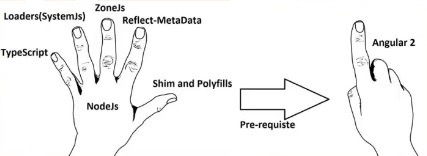Original article: link
Preface
Angular is already at v6.0.3, so why revisit the jump from 1.x to 2? Because versions 2/4/5/6 iterate on the same architectural foundations. Modules, components, pipes, DI, directives, and routing still look like Angular 2. Understanding the 1.x → 2 transition explains everything that followed.
Highlights of the shift
Angular 2 isn’t a minor upgrade—it’s a rewrite. Here’s where it diverges from Angular 1.x.
- Angular 2 is a complete redesign rather than a patch on top of 1.x.
- Controllers (a 1.x concept) disappear; Angular 2 embraces web-standard components.

$scopeis gone. Angular 2 relies on Zone.js to help with change detection.- Mobile support becomes a first-class goal in Angular 2; 1.x had limited mobile stories.
- TypeScript is the recommended language for Angular 2—bringing static typing, decorators, and ES6+ features. Angular 1.x was plain JavaScript.
- Dependency injection becomes hierarchical, and change detection adopts a unidirectional tree approach for better performance.
- DI is expressed through constructor parameters instead of inline
$injectarrays. - Template local variables use the
#variablesyntax. - Structural directives switch from
ng-repeatto*ngFor. - Directive names move from dash-case (
ng-class) to camelCase (ngClass,ngModel). - Bootstrapping is unified—no more
ng-appattribute. You bootstrap via code. - Routing is built around decorators instead of
$routeProvider:And templates use@Routes([ { path: '/', component: HomeComponent }, { path: '/contact', component: ContactComponent } ])routerLinkrather thanng-href:<ul> <li><a [routerLink]="['/']">Home</a></li> <li><a [routerLink]="['/contact']">Contact</a></li> </ul> - Helpers like
ng-href,ng-src, andng-hideare unnecessary—use nativehref,src, andhidden. - One-way binding (
ng-bind) becomes[property]binding. - Two-way binding (
ng-model) becomes[(ngModel)]. - Angular 1.x was easy to start—drop in a script tag. Angular 2 depends on Zone.js, SystemJS, shim.js, Reflect Metadata, plus Node.js and TypeScript tooling. Miss any of those and the app won’t bootstrap.

Hopefully this clarifies the biggest deltas between Angular 1.x and Angular 2.

